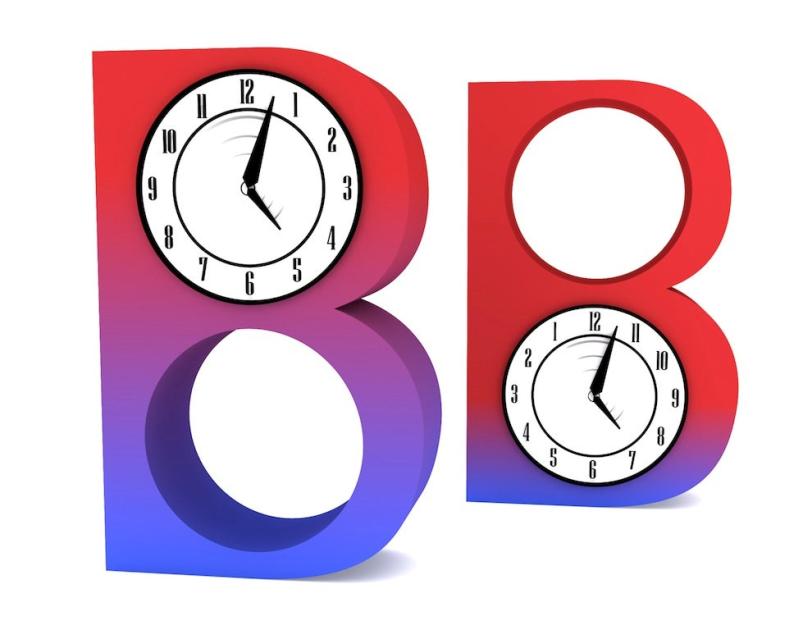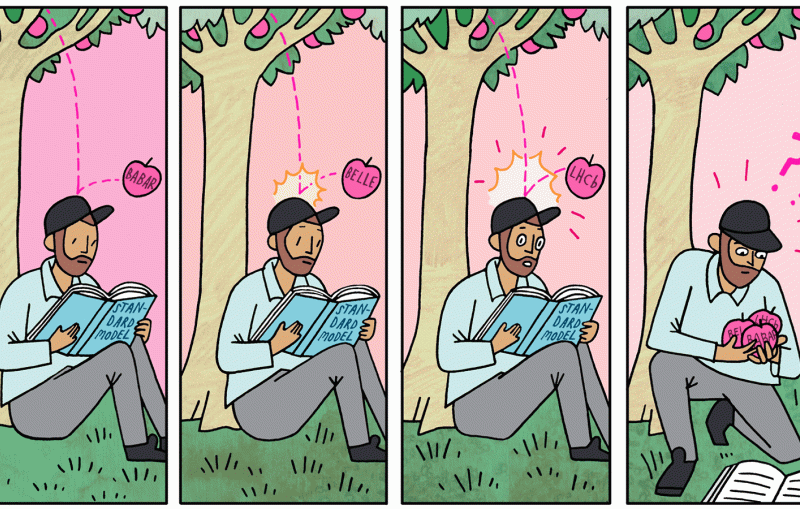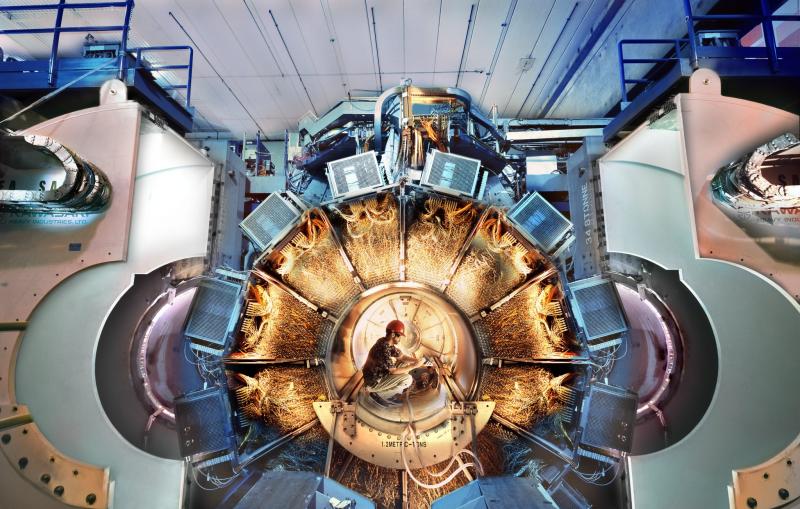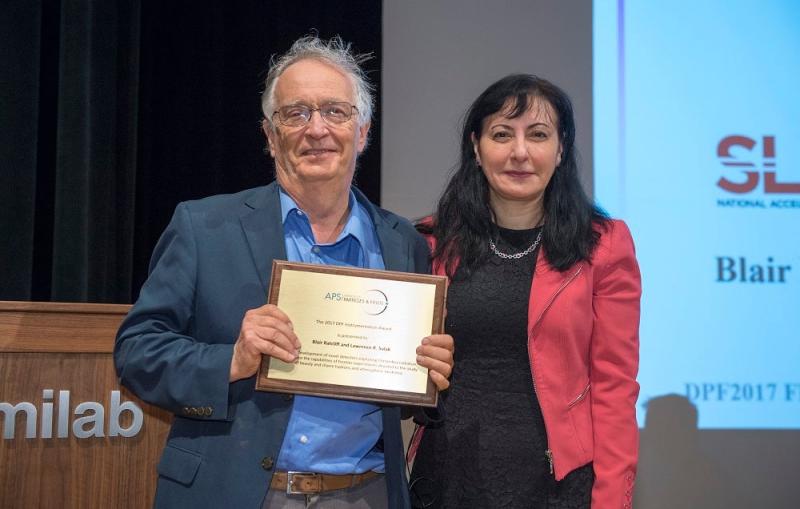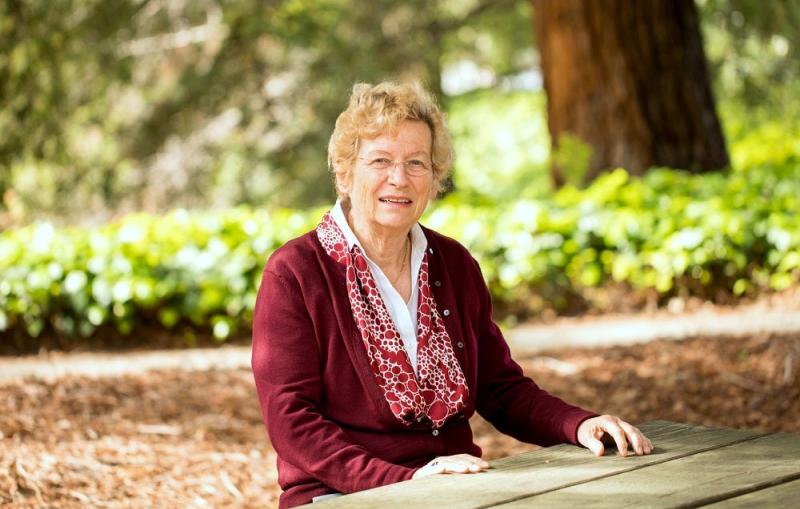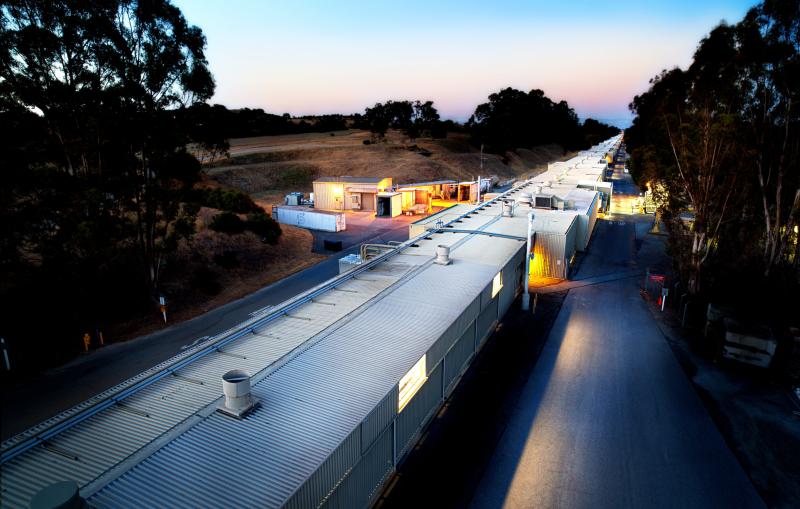BaBar Experiment Confirms Time Asymmetry
Menlo Park, Calif. — Time marches relentlessly forward for you and me; watch a movie in reverse, and you’ll quickly see something is amiss.
Menlo Park, Calif. — Time marches relentlessly forward for you and me; watch a movie in reverse, and you’ll quickly see something is amiss. But from the point of view of a single, isolated particle, the passage of time looks the same in either direction. For instance, a movie of two particles scattering off of each other would look just as sensible in reverse – a concept known as time reversal symmetry.
Now the BaBar experiment at the Department of Energy's (DOE) SLAC National Accelerator Laboratory has made the first direct observation of a long-theorized exception to this rule.
Digging through nearly 10 years of data from billions of particle collisions, researchers found that certain particle types change into one another much more often in one way than they do in the other, a violation of time reversal symmetry and confirmation that some subatomic processes have a preferred direction of time.
Reported this week in the journal Physical Review Letters, the results are impressively robust, with a 1 in 10 tredecillion (1043) or 14-sigma level of certainty – far more than needed to declare a discovery.
“It was exciting to design an experimental analysis that enabled us to observe, directly and unambiguously, the asymmetrical nature of time,” said BaBar collaborator Fernando Martínez-Vidal, associate professor at the University of Valencia and member of the Instituto de Fisica Corpuscular (IFIC), who led the investigation. “This is a sophisticated analysis, the kind of experimental work that can only be done when an experiment is mature.”
BaBar, which collected data at SLAC from 1999 to 2008, was designed to tease out subtle differences in the behavior of matter and antimatter that might help account for the preponderance of matter in the universe. It produced almost 500 million pairs of particles called B mesons and their antimatter counterparts B-bar mesons for study. BaBar scientists found that B mesons and B-bar mesons do, indeed, behave differently in ways that violate so-called CP symmetry, which incorporates the symmetries of charge (positive versus negative) and parity (which can be thought of as left-handedness versus right-handedness). This discovery of CP violation contributed to the 2008 Nobel Prize in Physics.
CP symmetry is linked with time reversal symmetry through the CPT (charge-parity-time) Theorem, which states that the three symmetries must remain in balance for any given particle system. If one of the symmetries is out of whack, at least one of the others must be, too.
So the BaBar data, with its evidence of CP symmetry violation already in hand, was a good place to look for violation of time reversal symmetry that would serve to balance CPT as a whole.
BaBar's new time violation analysis was based on a concept proposed in 1999. Researchers examined a chain of particle transformations in which B mesons flipped between two different states called B-zero and B-even. Taking advantage of the quantum entanglement of the B mesons, which enables information about the first decaying particle to be used to determine the state of its partner at the time of the decay, they were able to find that these transformations happened six times more often in one direction than the other.
“This is a fresh way to understand data we had already used to measure CP violation,” said BaBar physics coordinator Abner Soffer, associate professor at Tel Aviv University. “By looking at it slightly differently we were able to undeniably see time violation as well. What’s nice is that the effect was there the whole time, but nobody had thought about it the right way before.”
Time violation had previously been seen in particles called neutral kaons by the CPLEAR experiment at CERN, but that measurement was not direct because of the inability to distinguish T violation from CP violation, and the interpretation of those results drew some criticism. It’s hard to set up laboratory conditions that can see time reversal violation, Martínez-Vidal explained. But BaBar provided just the right conditions for a clear, direct measurement.
“In the past, a true test of time reversal symmetry with unstable particles was considered to be impossible,” said BaBar associate José Bernabéu, a professor at the University of Valencia and IFIC, and one of the originators of the analysis concept. “It's spectacular that the solution came from the same entanglement phenomenon used for quantum communication and computing.”
Michael Roney, BaBar spokesperson and professor at the University of Victoria in Canada, said "BaBar's data has been extremely fruitful and continues to produce important results, such as this unique and unambiguous test of quantum field theory. As we continue to work on almost 100 measurements from BaBar that investigate the fundamental nature of time and matter, we're gratified to have further validated this underlying theory."
This work is supported by the DOE Office of Science and NSF (USA), NSERC (Canada), CEA and CNRS-IN2P3 (France), BMBF and DFG (Germany), INFN (Italy), FOM (The Netherlands), NFR (Norway), MES (Russia), MINECO (Spain), STFC (United Kingdom). Individuals have received support from the Marie Curie EIF (European Union), the A. P. Sloan Foundation (USA) and the Binational Science Foundation (USA-Israel).
SLAC is a multi-program laboratory exploring frontier questions in photon science, astrophysics, particle physics and accelerator research. Located in Menlo Park, California, SLAC is operated by Stanford University for the U.S. Department of Energy Office of Science. To learn more, please visit www.slac.stanford.edu.
DOE’s Office of Science is the single largest supporter of basic research in the physical sciences in the United States, and is working to address some of the most pressing challenges of our time. For more information, please visit science.energy.gov.
Related Links
J. P. Lees et al. (BaBar collaboration), Physical Review Letters, Volume 109, Issue 21 (2012)
Bernabéu et al., Journal of High Energy Physics, Volume 2012, Number 8, 64 (2012)
Bernabéu & Banuls, Physical Letters B, 464,117 (1999)
Wolfenstein, International Journal of Modern Physics E, 8, 501 (1999)
Quinn, Journal of Physics: Conference Series, 171, 01101 (2009)
